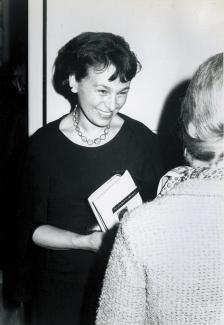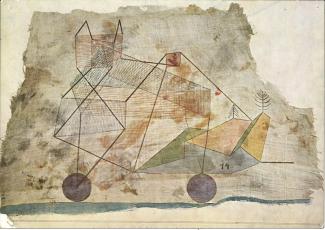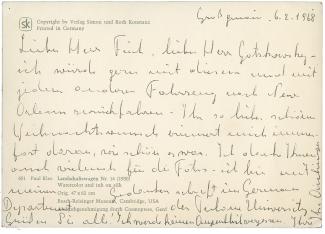Most likely, Aichinger did not read “The Fourth Gate” at Tulane, but she may have read from the novel that grew from that seed: The Greater Hope (1948). The United States Holocaust Memorial Museum characterizes this novel as a “highly symbolic and dreamlike work that describes the fate of a group of Jewish children in Vienna during World War II and how the realities of life under Nazi occupation gradually overwhelm childhood dreams.” In chapter 6, we find out what happened to the children from the cemetery: as they playfully enact the Nativity scene at home, they are unwittingly detained by a Gestapo agent, taken to a camp and murdered.
Or maybe Aichinger read Mirror Story at the Alumni House, the work that made her famous in Germany in 1952. Mirror Story relates the life of a woman dying after an abortion, but mirrors time so that it runs backwards to her birth: death is birth. For Aichinger, the recognition of death jolts life into more intense living: “Everything is for the last time. If we comprehended that, love would reveal itself to us. Repetition only sets the rhythm.”
Maybe she chose neither of these two works but instead read “The Bound Man,” a story about a man who attains an unheard-of grace of movement that depends on being fettered with rope all over his body. Aichinger’s stories undermine conventional language and understanding by means of surreal, dream-like events, ambivalent symbols, baffling paradoxes and confounding parables that ask for interpretation but deny any definitive resolution of meaning. When she retells fairy tales like Grimm’s The Wolf and the Seven Young Goats, as she later did in the 1970s, they turn into prose poems about mass murder.
Whatever Aichinger read at Tulane, we know that she read in German. After the war and the Holocaust, Germanophone writers had to find a language that could speak to the historical catastrophe they had experienced; destroy the language of the Third Reich; express the inexpressible in words; and inscribe in memory the people and the places that had been lost. Aichinger’s defamiliarizing, disorienting, shocking image-language was one of many responses to this dilemma. The faculty and students at the Alumni House thus heard post-Holocaust literary German from the mouth of its creator — as did audiences in Boston, Montreal, San Francisco, Houston, Washington, D.C., New York City and other cities. Along with other institutions, Tulane played a role in disseminating in America Ilse Aichinger’s answer to German literature’s dilemma. Moreover, by means of its foreign language teaching, Tulane enabled its students to become listening participants in this post-war German and American language history.
Dietmar Felber is a PhD candidate and language instructor in the Tulane Department of German and Slavic Studies.

































































